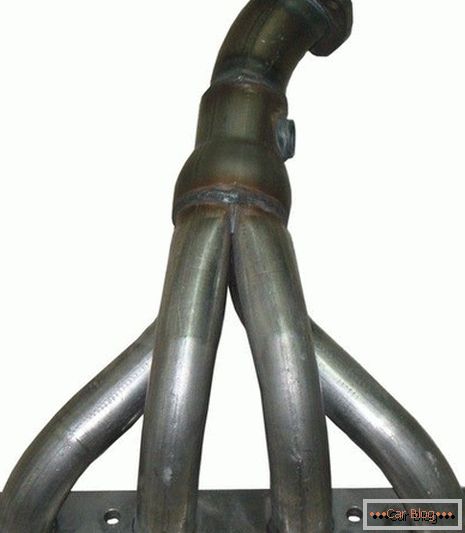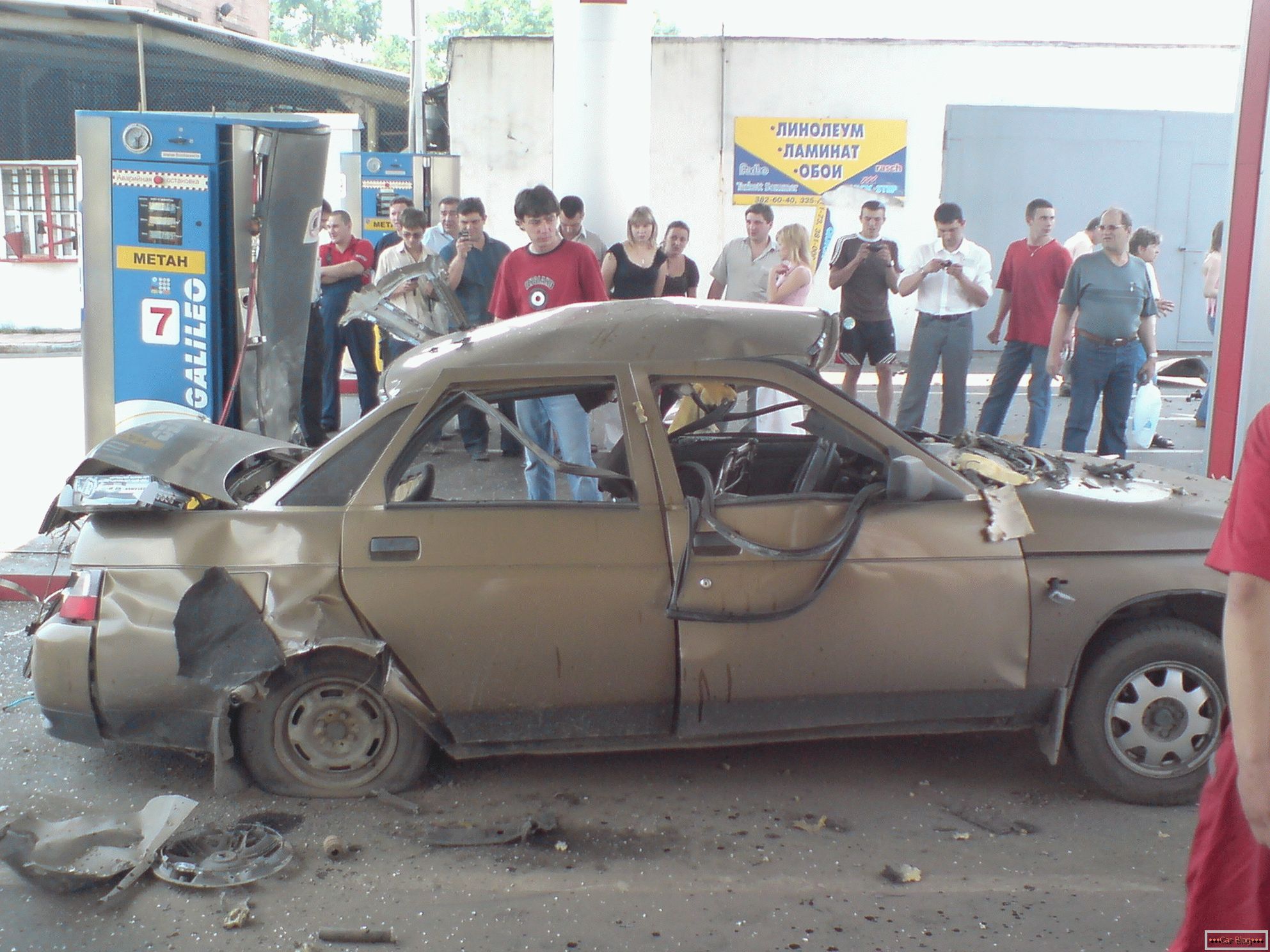>
Very soon, a new domestic car will be available on the Russian market, where it will have to compete with leaders of a certain class.
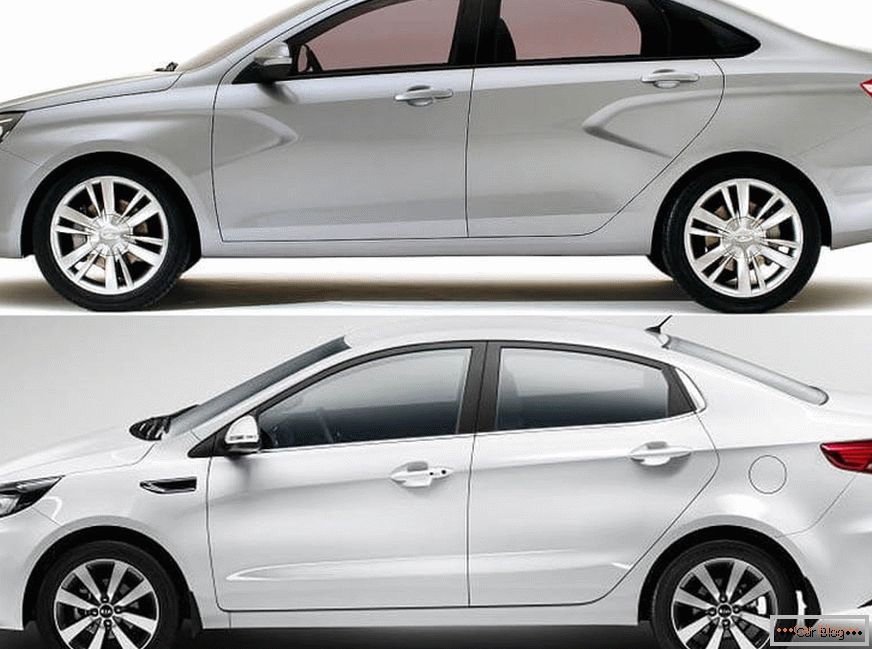
One of the main competitors is the Korean car, so a comparison of the Lada Vesta and Kia Rio comes in handy. The review will help to understand all the advantages and disadvantages of the car, so that Russian buyers have the initial opinion about the new model.
Читать далее, сравнение Лада Веста и Киа Рио-->Чтобы проверить автомобиль в полной мере, тестирование проводилось в условиях российских дорог.
General assessment of cars
Эстеререр
You should start the review of Lada Vesta v Kia Rio with the appearance. Vesta borrowed its design from the previously developed design of the 2012 concept Lada XRAY. The main feature of the style are notches in the form of a zigzag on the sides of the car and an X-shaped front part. It has an elongated and angular shape, so the Vesta looks like a sports car, and the hood is combined with fashion trends of the exact placement of elements.
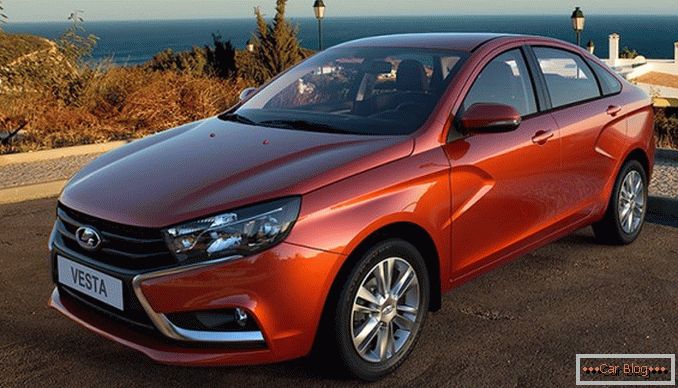
It is reported that Lada Vesta will be the first car, released on the design concept XRAY. After the release of the main model, engineers are going to start working on the hatchback. The compact model will be available next year. If the new version shows good results in the market, then the engineers will continue to develop the branch and will be engaged in the production of Vesta in the station wagon.
If we compare Vesta with Rio, then we can say that they look in a European style. However, unlike Vesta, the Korean car did not receive any new changes in its design. This fact is explained by the fact that the Korean company does not yet wish to take risks, since even in the unstable market, Rio continues to occupy leading positions in its segment in the Russian market. Therefore, the developers did not decide on fundamental changes and only corrected the appearance.
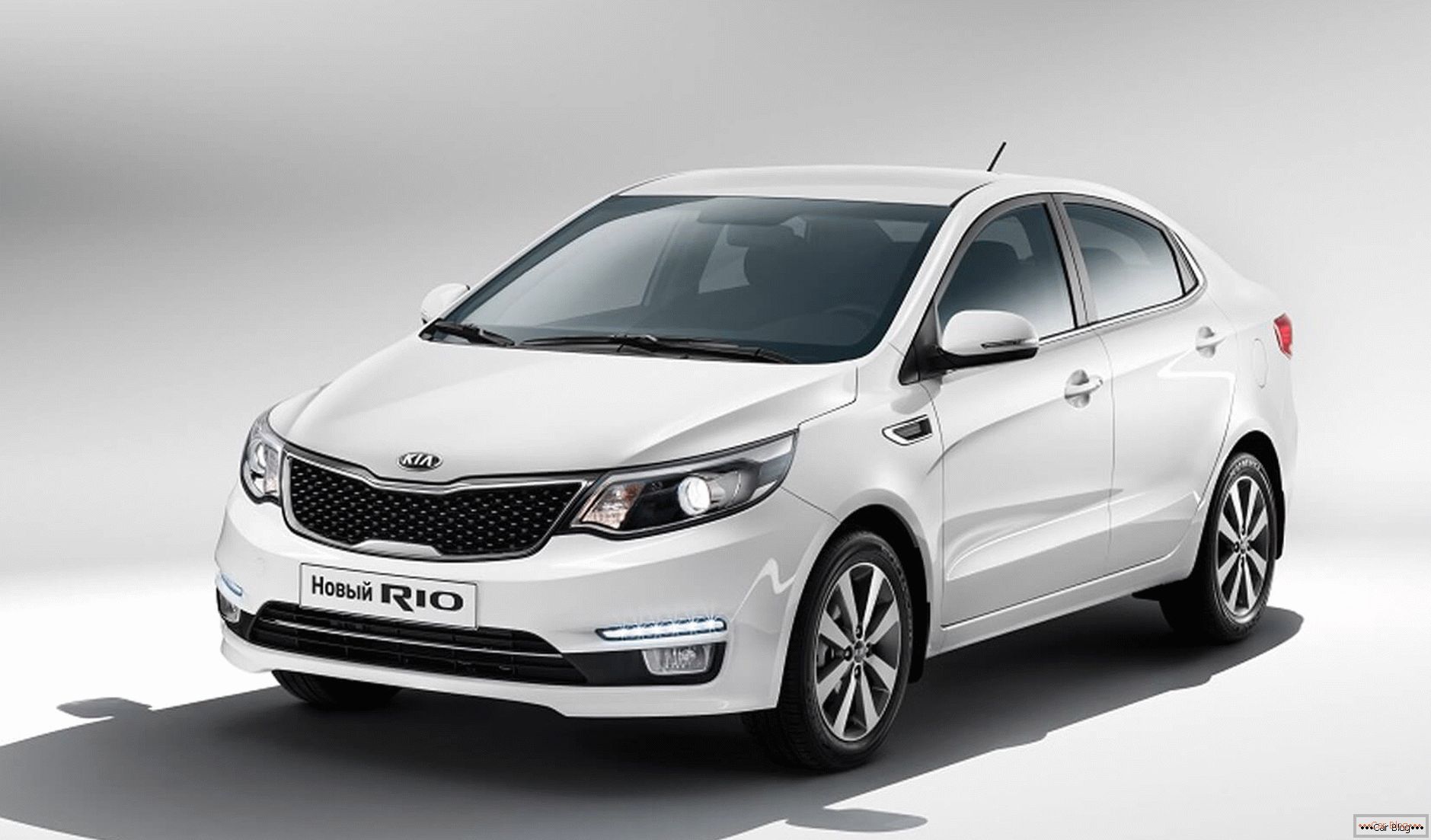
It is important to note that the adjustment made the car more attractive. He received new taillights, but their shape remained unchanged. Fans of modern styles can rejoice, as the Kia Rio has LEDs that perfectly highlight the character of the car. In general, the design of the car can be called exclusive, the company's employees managed to create an attractive and beautiful appearance for the budget segment model.
Interior
In evaluating the salons, it is worth noting a pronounced European style in both cases. Korean-made car offers a fairly high level of comfort and visibility. However, passengers with a height of 175 cm may be uncomfortable in both the front and rear seats.
 Discounts for new cars! Profitable loan from 9.9% installments 0%
Discounts for new cars! Profitable loan from 9.9% installments 0%  adom.ru And in the back seat, this problem is much more tangible. In the struggle of Lada Vesta against Kia Rio it is worth emphasizing that Vesta has a larger base. The difference makes it possible to increase the amount of free space inside the domestic model. However, with high growth will be closely in West, not to mention the Korean model.
adom.ru And in the back seat, this problem is much more tangible. In the struggle of Lada Vesta against Kia Rio it is worth emphasizing that Vesta has a larger base. The difference makes it possible to increase the amount of free space inside the domestic model. However, with high growth will be closely in West, not to mention the Korean model.
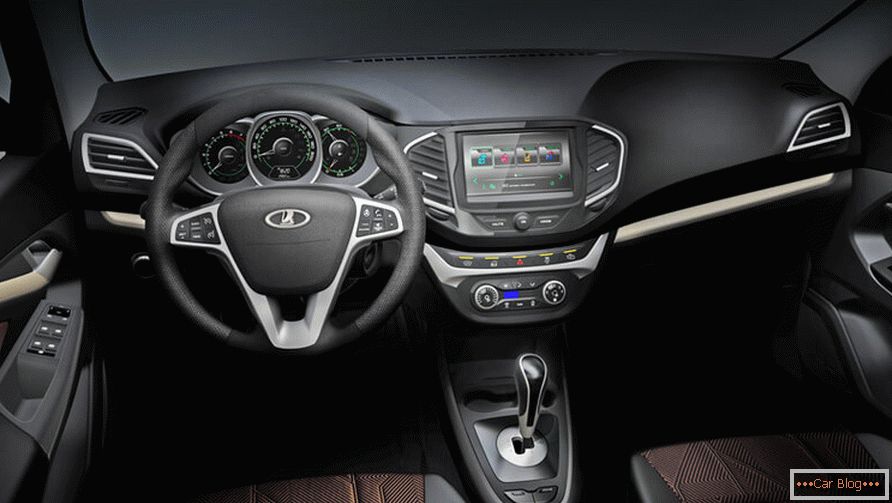
The build quality of the car's interior elements was decided to be carried out using a music system. At the volume level above the average, Rio had a strong rattling of individual plastic panels, but the sound quality was high. In turn, the domestic car was pleasantly surprised, showing not only the acoustics of excellent quality, but also the absence of rattling of cabin parts under the influence of music at high volume.
Battle kitting
The basic equipment of the Korean model includes a good music system with four speakers, two electric windows, mirrors with heating function, two airbags and ABS.
Video review of Lada Vesta:
In the maximum configuration added climate control, a more advanced audio system, two more windows, the ability to access without a key, a leather steering wheel with additional heating and four more airbags. Interestingly, the maximum grade is offered with 16-inch discs, when similar models are provided by other companies in the same configuration with 15-inch discs, but only with the additional charge.
In the base trim Lada West and Kia Rio there are practically no special differences. In total for the domestic car is offered similar to the Rio 12 complete sets, which will be divided into three different categories of equipment. Low-cost versions will be sold with 15-inch disks, and 16-inch disks will be installed on more expensive versions. In addition, in the starting version of the Russian car will be installed ABS and ESP, as well as the ability to adjust the steering wheel on the slope.
Video review Kia Rio:
Adjusting the driver's seat and steering wheel on the flight is offered in more expensive versions. According to the standard, the car is equipped with a modern audio system, navigation, seat heating and rain and light sensors. One of the corporate options Vesta is the system "Era-Glonass", which allows you to fully control the car in cases of accident or theft.
Specifications
Engines and transmissions
The variety of engines in the standoff Lada Vesta vs Kia Rio leads the Russian car. At the start of sales, the domestic model will be equipped with a 1.6-liter engine with a power of 106 horsepower. A little later, two more engines with the same volume and power of 87 and 114 horsepower will be added.
| Car model: | Kia Rio |
| Producing country: | Korea |
| Body Type: | sedan |
| Number of places: | 5 |
| Number of doors: | 4 |
| Engine capacity, cc: | 1396 |
| Power, l. c./about min .: | 135/5000 |
| Maximum speed, km / h: | 175 |
| Acceleration to 100 km / h, from: | 13.5 |
| Type of drive: | front |
| CAT: | 4ACPP |
| Fuel type: | gasoline AI-92 |
| Consumption per 100 km: | city 8.5; highway 5.2 |
| Length, mm: | 4370 |
| Width, mm: | 1700 |
| Height, mm: | 1470 |
| Clearance, mm: | 160 |
| Tire size: | 185/65 R15 |
| Curb weight, kg: | 1140 |
| Full weight, kg: | 1565 |
| Fuel tank capacity: | 43 |
But that's not all. After that, it is planned to release the engine, a volume of 1.8 liters, whose power will be 123 horses. The Korean company offers a modest choice in the form of an engine of 1.4 liters and a capacity of 107 horses. More powerful unit has a volume of 1.6 liters and 123 horsepower.
| Car model: | Lada Vesta |
| Producing country: | Russia (Izhevsk) |
| Body Type: | sedan |
| Number of places: | 5 |
| Number of doors: | 4 |
| Engine capacity, cc: | 1596 |
| Power, l. c./about min .: | 148/4800 |
| Maximum speed, km / h: | 1788 |
| Acceleration to 100 km / h, from: | 11.8 (manual transmission), 12.8 (automatic transmission) |
| Type of drive: | front |
| CAT: | 5MCPP, 5ACPP |
| Fuel type: | gasoline AI-95 |
| Consumption per 100 km: | 7 |
| Length, mm: | 4410 |
| Width, mm: | 1764 |
| Height, mm: | 1497 |
| Clearance, mm: | 178 |
| Tire size: | R15 |
| Curb weight, kg: | 1150-1195 |
| Full weight, kg: | 1625-1670 |
| Fuel tank capacity: | 55 |
In choosing which transmission is better, you should give your vote to Kia Rio. The Lada Vesta is equipped with an automatic robotic gearbox with five steps. In turn, the Korean competitor is running a six-speed hydrotransformer automatic transmission. This device shows itself somewhat more logical and softer than the transmission of Vesta. The robotic system proved to be unsuccessful during acceleration.
In the situation of shifting to a lower gear, the box is clearly late, but in such cases, manual control really helps out. If you compare it with similar systems on other similar models, the Lada Vesta has a softer movement pattern, and the gears switch smoothly and confidently.
Driving qualities
When the dynamics of acceleration Lada West and Kia Rio show almost identical figures, but it all depends on the difference in transmissions. Gearboxes are different in operation, so the behavior of the machines is different. Due to the softer gearbox in the Korean car, the start is somewhat more dynamic and confident. In turn, Vesta is not in a hurry to gain momentum, and a heavy load causes extraneous noises in the gearbox, despite timely gear changes.

Виной низкого стартового ускорения в российском автомобиле является откровенно слабый мотор. А вот на трассе он намного опережает своего корейского брата. Лада в таких условиях передвигается увереннее, отчётливо держит траекторию в момент обгона, проявляет замечательную плавность передвижения. Отечественный sedan показывает все преимущества новой платформы на дороге. Точная работа подвески сглаживает все неровности покрытия, в то время как корейская модель как будто нарочно собирает ямы, сообщая о них жёсткими ударами стоек.
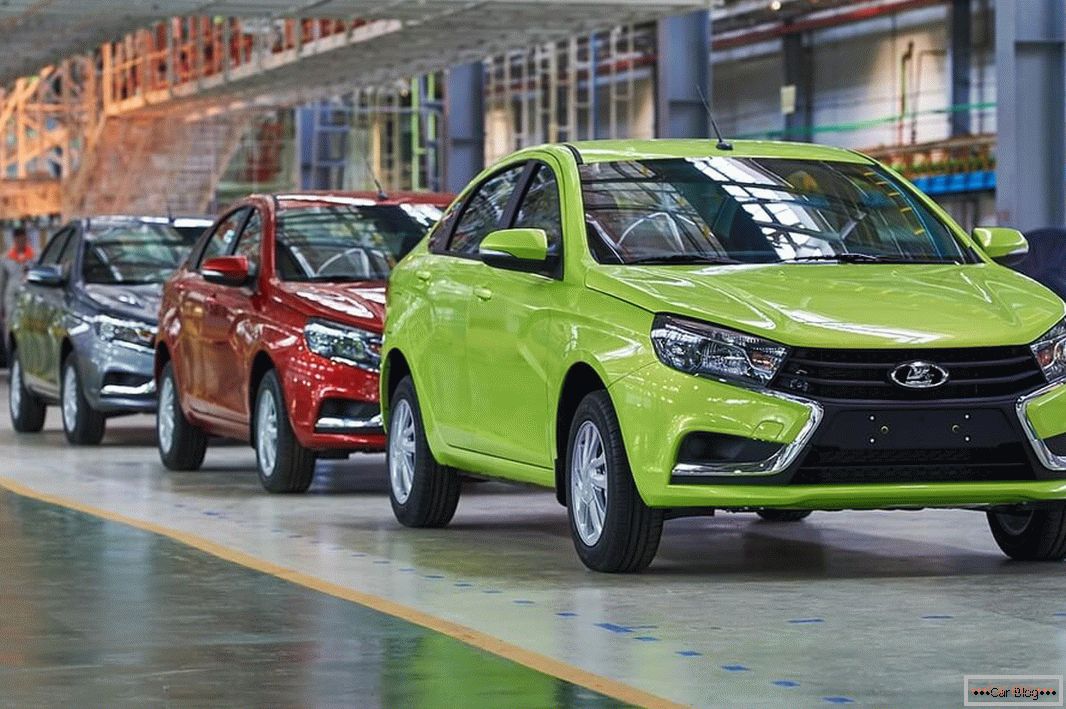
However, too soft suspension at Vesta creates additional rolls on sharp turns, which adversely affects the overcoming of bends. This disadvantage is compensated in some points by the possibility of turning off the ESC system with an electric booster on the steering wheel, unlike the hydraulic system on the Kia Rio. Among the shortcomings of Vesta, it is possible to identify too long a brake pedal stroke, which makes it a little harder to slow down the car.
Conclusion
Summarizing the results of the comparison, I would like to note that Vesta proved to be very worthy while checking the quality of movement. It practically does not differ from the competitor in terms of providing comfort and is easily comparable in design quality.
Of course, as in other cars of this segment, it has its shortcomings. Anyway, we can safely say that this is a new stage in the development of the domestic manufacturer, so there is every chance to continue to develop and raise the bar for the quality of Lada cars.

